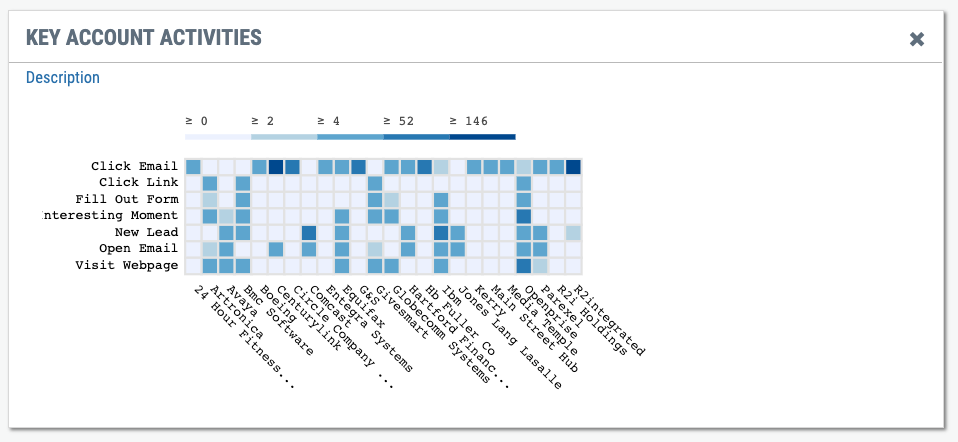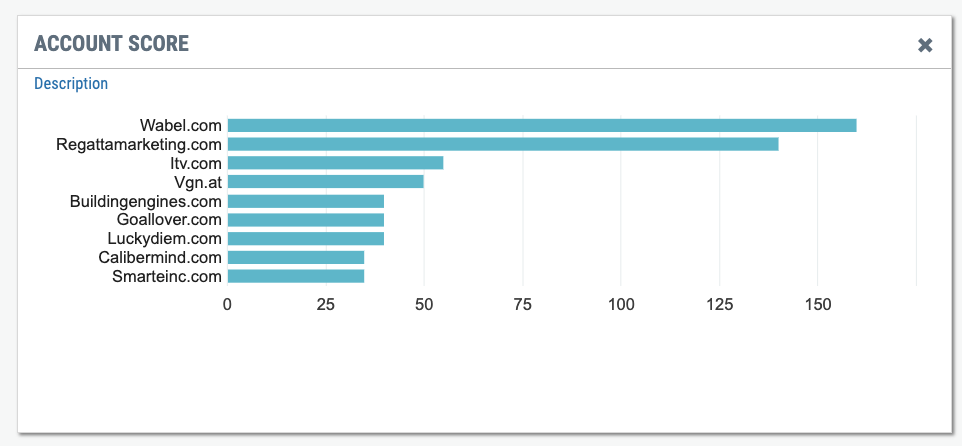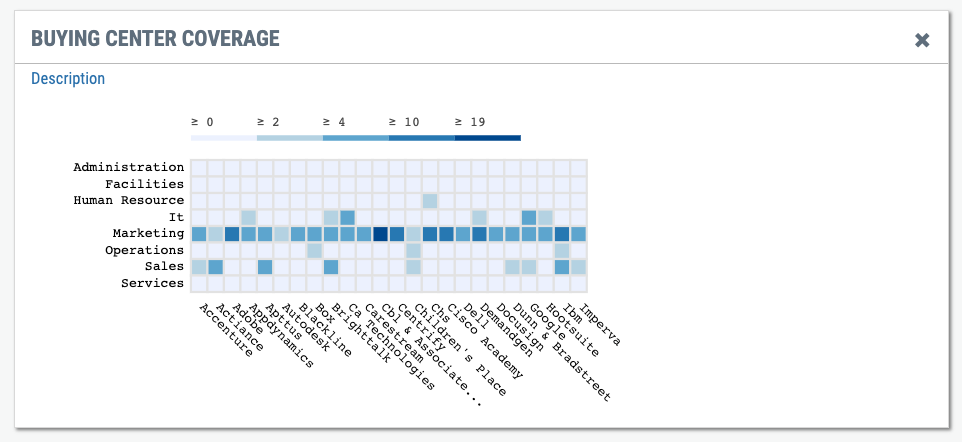
What is lead to account matching? Why is It so important for marketing and sales?
Lead to account matching is an important, but often unappreciated, process. You need it for higher-level marketing and sales business processes like lead routing, lead and account scoring, and attribution.
What is Lead to Account Matching?
When a prospect fills out a form on a website, attends a field event, or interacts with any other type of campaign, that prospect enters sales automation applications like Salesforce and Microsoft Dynamics as a Lead. That Lead record gets associated with related fields like Email, Company, and Lead Source. For example, the Lead Name, “Thomas Shelby,” may enter Salesforce with the Company, “The Shelby Companies.” And the Email, “thomas.shelby@theshelbycompanies.com.” (In this example, please suspend your disbelief that prospects in the 1920s have email addresses.)
Anyone in Salesforce can search this lead’s name or company and pull up the full lead record for followup. But this lead isn’t in any way associated with other employees of the same company. If another prospect, “Polly Gray,” were to enter the system from a field event, there wouldn’t be any association between the two leads. That’s a big problem if you’re trying to sell to that company. That’s because you don’t have much visibility into the broader organization, who on your team is talking to them, and what campaigns people in that company have taken part in.
Why Manual Lead to Account Matching Isn’t the Answer
To address this visibility issue, applications like Salesforce enable salespeople to manually convert a Lead into a different structure, a Contact, and manually confirm the Account the prospect belongs to. This is “lead to account matching” in Salesforce. If there’s an ongoing deal, the salesperson can manually associate the prospect with an Opportunity record too. If a salesperson goes through the manual steps of converting a Lead to a Contact and associating that Contact with an Account and an Opportunity, then all kinds of business processes are much easier to do and reporting is a snap.
Unfortunately for marketers, sales leaders, and sales operations professionals, lead to account matching is a time-consuming process. And salespeople generally only get paid to close deals rather than do data hygiene. So very often those individual prospects remain as Leads in Salesforce. That makes reporting difficult and means many business processes don’t work very well. It’s also unfortunate that applications like Salesforce and Microsoft Dynamics don’t have the ability to automate this functionality out of the box.
Why Lead to Account Matching is Important to Marketing and Sales Teams
In small companies, with short sales cycles and often only one decision-maker, lead to account matching isn’t critical. But when organizations grow to have larger sales and marketing teams calling on multiple people in a target account, automated lead to account matching becomes absolutely essential. Here are a few examples of processes that depend on it:
Lead Routing
In an instance of Salesforce that doesn’t have automated data cleansing processes, it’s not uncommon that ownership to look like this:
- An Account Development Rep (ADR) owns a Lead from a company
- Another ADR owns a contact from that same company
- A third salesperson owns the Account
- Yet another salesperson owns a new Opportunity
In our example, when Polly Gray, the second most senior person at the company, enters Salesforce, you’d want to route that new Lead to the right person who owns that Opportunity and that Account, rather than let the lead go stale, or have someone who doesn’t know what’s going on at that Account do the followup. Lead to account matching is the first step in routing that new lead to the right account owner.

Lead Scoring and Account Scoring
Many sales teams have far more leads than they can follow up with, nurture along, or keep an eye on for signs that a prospect is showing intent to buy, so marketing automation solutions like Eloqua, Pardot, and Marketo, as well as revops automation solutions like Openprise, have lead scoring and account scoring models built in.
If you can automatically match a Lead to an Account, you can pull all kinds of enriched data at the Account level to know whether that Account is:
- Big enough to meet your Ideal Customer Profile (ICP).
- In your company’s target industries (like professional services, security, transportation, hospitality, gaming).
- In the right geography where you have sales teams in place (New York City, or Birmingham, for example).
You’d want to score such a lead very high if it met all those criteria.
You also might want to score that Account very highly if, along with meeting all the key criteria of ICP, you see interest from multiple people in the same Account downloading assets from your website. Lead to account matching comes into play here as well.

Attribution
Even in complex sales cycles with multiple people involved in a purchase decision, salespeople are notorious for associating a single Contact with an Opportunity. Companies may choose to tweak lead to account matching functionality to also handle lead to opportunity matching. That way you can view all the campaigns associated with all the Contacts in an Account and an Opportunity. Based on the dates of each of the Campaigns associated with the Opportunity, you can then establish which Campaign was the “first touch” and “last touch” that led to the creation of that Opportunity. You can then make better decisions about which campaigns to invest in going forward.
How the Lead to Account Matching Process is Actually Done
Many salespeople won’t invest the time to manually match Leads to Accounts. And solutions like Salesforce and Microsoft Dynamics don’t have this capability out of the box. So, many companies choose to automate this process with revops automation solutions. These applications can watch for new Leads entering your CRM system. Then they automatically convert them to Contacts, and associate them with the right Accounts.
The simplest way to perform lead to account matching? Look at the domain in a lead’s email address and match based on that. For example, “theshelbycompanies.com” is known to be a domain used by “The Shelby Companies.”
That’s a good start. But most enterprise revenue operations teams need a higher match rate than this technique alone can provide. Revops automation solutions make it easy for companies to string together multiple additional approaches, starting with the most accurate approach and then moving on to less accurate means.
Some techniques involve removing “stop” words from the account name, like “The,” “Company,” “Co.,” and “Inc.,” and then applying varying degrees of fuzzy matching to the remaining words in an account name.
Many companies use revops automation solutions to handle more complex use cases for lead to account matching. For example:
- Cases where Email is missing and Leads accurately match to Accounts based on fuzzy matches with Company, First Name, Last Name, and Title fields.
- Leads with double-byte characters sets (like Chinese or Korean) matched to global accounts.
- Leads with domains from subsidiaries matched to parent accounts. (pepsico.com is the parent and quakeroats.com, frito-lay.com, and gatorade.com all represent subsidiaries of PepsiCo)
Implications for the SiriusDecisions Demand Unit Waterfall
For companies implementing the SiriusDecisions Demand Unit Waterfall, lead to account matching, lead to buying group matching, and lead to demand unit matching are all important capabilities. Buying groups and demand units are usually custom structures in applications like Salesforce. So it’s important to ensure your application can support this type of matching.

Implications for Account-Based Marketing (ABM)
While some ABM solutions offer built-in lead to account matching capabilities, some leading providers don’t. Those that don’t usually only have visibility into Contacts, rather than Leads (the majority of most companies’ prospect records). It’s important to complement your ABM technology with a solution that does lead to account matching. Otherwise the ROI of your ABM initiative will be suboptimal.














